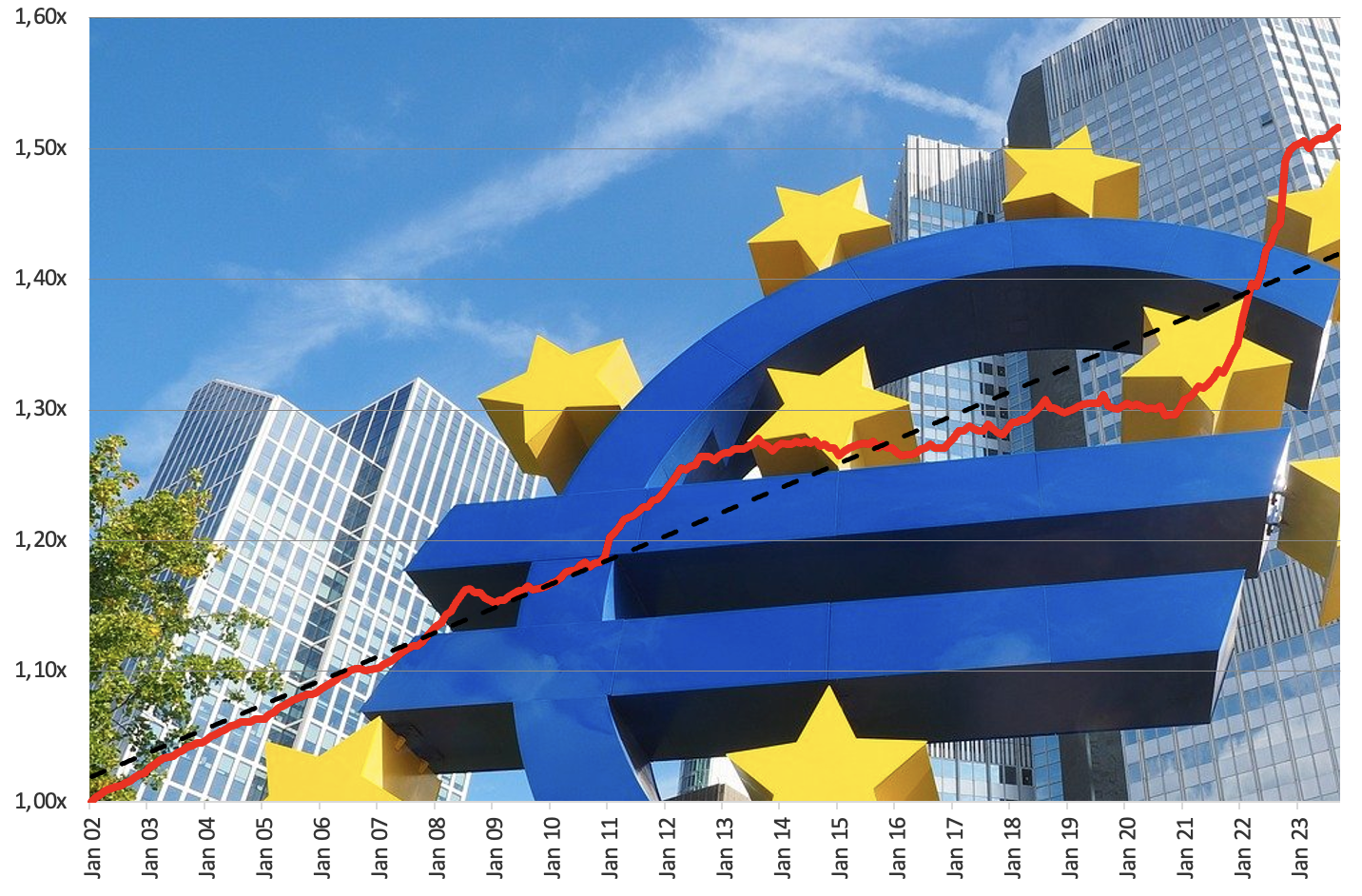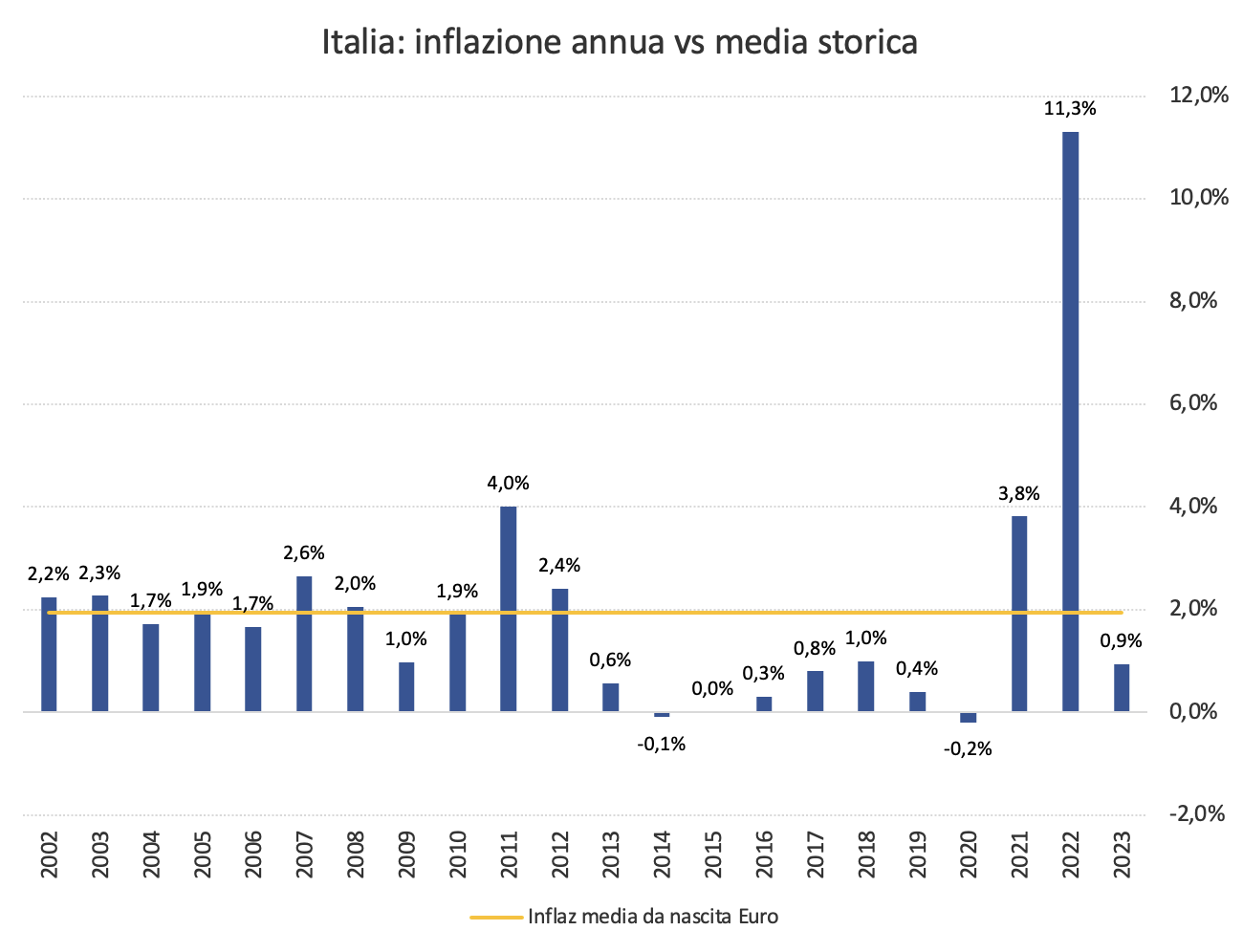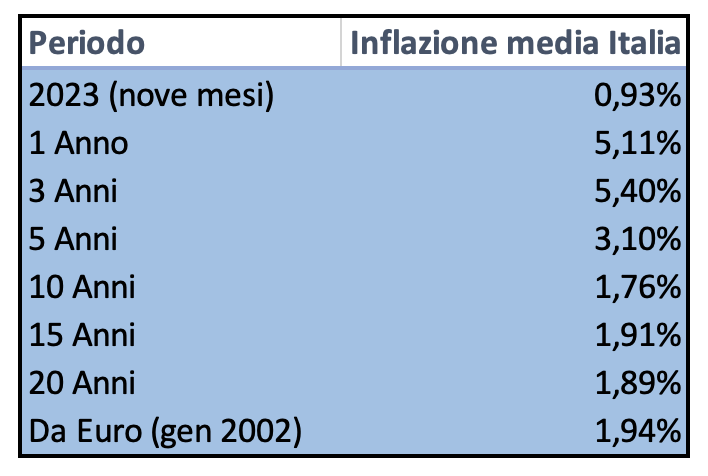This year, inflation has been a constant topic of discussion, with the media inventing all sorts of exotic statistics to create a sensation and garner interest (for example, annualizing a monthly figure as if it were to repeat for 12 consecutive times).
To avoid misunderstandings, it may be useful to look at the data published by ISTAT on Italian inflation, measured through the FOI index (National Consumer Price Index for Families, Workers, and Employees) excluding tobacco.
The following graph groups the data in terms of year-over-year changes, in order to provide a concrete comparison to the numbers we are analyzing.
Source: ISTAT, FOI index excluding tobacco as of 30/09/2023. Data processing: Alberto Miazzi, CFA.
As can be easily seen, the year 2023 so far (data as of September 30, 2023) shows an inflation rate of +0.9%, in stark contrast to the year 2022, which proved to be extraordinary, with a change in the inflation index of +11.3%!
Those who rushed to buy inflation-indexed government bonds at the beginning of this year, convinced that the 2022 trend would continue, did not make a great deal: this confirms the usual thesis that when everyone is talking about a certain economic phenomenon, it is better to steer clear… If significant returns could be achieved simply by following short-term trends, the life of an investor/saver would be too easy.
Compared to the history of the euro in Italy, 2022 was the most extreme year of all, deserving the label of outlier compared to previous years. The yellow line, on the other hand, traces the historical annual average of Italian inflation since the euro was introduced in January 2002: this closely approaches the European Central Bank’s inflation target of 2% (to be precise, 1.94%), which hopes to curb further significant price increases by limiting the circulation of money in the economy through higher interest rates (thus raising the cost of financing). We will see what happens in the coming months.
To conclude, it seems interesting to look at the same data “spread” over increasingly broader horizons.
Source: ISTAT, FOI index excluding tobacco as of 30/09/2023. Data processing: Alberto Miazzi, CFA.
Starting from 2023, the Italian inflation rate of 0.93% rises to +5.11% if the last three months of 2022 are also included.
Continuing in this direction, the average annual Italian inflation over the past 5 years is 3.10%, while it stands at the aforementioned 1.94% annually over the past 22 years, since the single currency was introduced (January 2022).
Without pretending to make inferences based on a single indicator, the recent decision by the European Central Bank to press the “PAUSE” button on short-term interest rate hikes seems reasonable, at least based on this data.






